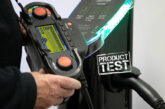
Pete ‘Monty’ Monfort, Proprietor at Monty Electrics and Director at Arena Training Centre, gets stuck into some bedtime reading this month as he reviews the NAPIT Guide to Initial Verification and Periodic Inspection & Testing of Electrical Installations.
I’ve always been a bit of a book worm, so I was really pleased to be able to get hold of a copy of the latest NAPIT publication and lose myself in it for a few hours. Inspection and testing is something that features a lot in both my roles on the tools and delivering training, so I also felt it would give me a chance to have some time to think and reflect upon my own practice.
Tremendous pedigree
As with the other publications that NAPIT has released in recent times, the book is robust and full of colour-coded sections with clear diagrams and pictures that make it easy to navigate and read. The pedigree of the authors is flawless as Richard Townsend and Paul Chaffers both have a wealth of experience in this sector.
The book begins with an overview of health and safety – a particularly important topic given that the UK continues to experience fatalities in the workplace due to workers coming into contact with live conductors. As it is easy to become blasé about the risks we face every day, it was also good to see the book highlight the ESR initiative that classifies electricians’ lock-off kits as PPE. In addition, the chapter also explores the relationship between the building regulations and the work done by electrical installation inspectors.
Chapter 2 serves as a useful reminder that those undertaking electrical inspections must be familiar with BS7671. This is an important message because far too many electricians struggle to make judgements that are underpinned by a working knowledge of the ‘regs’.
Chapter 3 covers supply and protective equipment. It addresses the overcurrent protection of RCCBs and main switches, as a result of the application of Regulation 536.4.3.2. This regulation is often misunderstood but there is a concise explanation of how to comply. There is also a useful summary on the selection of the types of RCDs that are now available.
Chapter 4 looks at safe isolation. It is important for all electricians to understand this process, but another area that often causes confusion relates to the disconnection of the neutral in three phase systems, so this section discusses when/how this should be done.
Chapter 5 focuses on testing equipment, and I recommend that readers take a look at the section on thermal evaluation equipment, which is still not a common tool in inspectors’ arsenals of tests.
Chapter 6 discusses the standard sequence of tests. A commonly asked question is addressed and explains how an inspector can determine whether or not a piece of metal is extraneous and needs bonding. It also explains clearly how an inspector can verify volt drop as part of the test sequence. In chapters 7 and 8 we discuss the inspection schedule that is part of the EIC and EICR.
Chapter 7 is a particularly useful chapter because it describes what checks should be performed. Meanwhile, chapter 8 gives a good view of how periodic inspections should be conducted, in terms of sampling. In conclusion, unless you are a very experienced inspector, I believe this book would be a very valuable addition to any library of resources. The pictures show clear guidance and there are a lot of helpful comments and examples provided throughout.
Find out how to order a copy of the publication by clicking here









